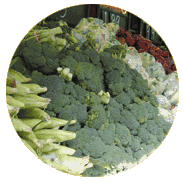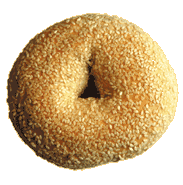FOOD & GARBAGE RESOURCES
 One of the
best ways to learn more about food and garbage is to march
into your kitchen and start thinking like a detective:
Where did that food come from (hint: it wasn't grown at
the supermarket)? How did it get here? And how much waste
is it going to make? If all this investigating makes you
want to start eating more things that don't come in boxes
or from halfway around the world, you're ready to learn
more.
One of the
best ways to learn more about food and garbage is to march
into your kitchen and start thinking like a detective:
Where did that food come from (hint: it wasn't grown at
the supermarket)? How did it get here? And how much waste
is it going to make? If all this investigating makes you
want to start eating more things that don't come in boxes
or from halfway around the world, you're ready to learn
more.
The site for the Council of the Environment of NYC,
the gang that oversees the Greenmarket, can be found at
www.cenyc.org.
It includes lots of fun facts along with market schedules
and locations, as well as links to related environmental
resources.
If you want to find out more about the farmers who sell
their produce at the Greenmarket, check out www.farmtotable.org
An even more comprehensive site on local food and environmentally
sound farming, including factsheets and information on
the economic, environmental, animal-friendly, health,
and societal benefits of local organic farming, is at
www.foodroutes.org
 When you're
eating healthy, most of your garbage can be turned into
rich soil through composting, and maybe some worms. The
best resource for composting in the NYC area is at www.nyccompost.org
When you're
eating healthy, most of your garbage can be turned into
rich soil through composting, and maybe some worms. The
best resource for composting in the NYC area is at www.nyccompost.org
And if you really want to go all natural, you will want
to check out this clearinghouse of organic food information:www.ota.com
